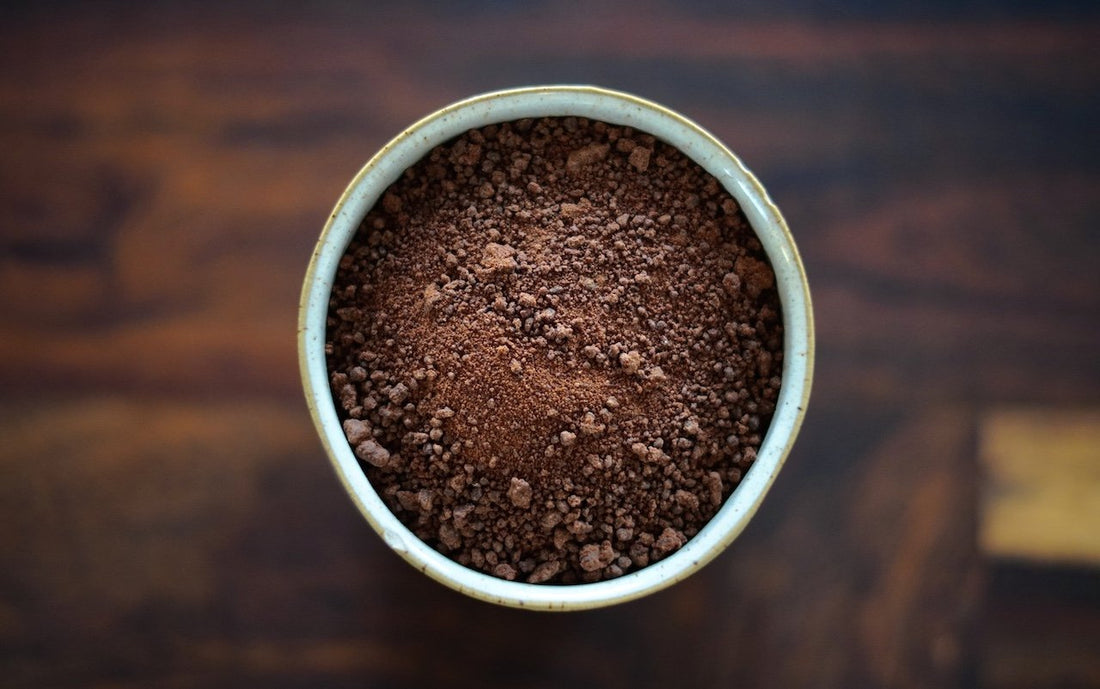
What the heck is ceremonial cacao anyways?
The cacao tree (Theobroma cacao) grows cacao fruit (cocoa nut) and inside it are cacao beans from which cacao is made. The naturalist Carl von Linné named the cacao tree Theobroma cacao in the 18th century, but this Greek word means food of the gods.
Cacao mass is a whole food made from the cacao bean that has been fermented, the shell is removed and the bean is then ground into a mass that hardens. The cacao mass, hereinafter referred to as cacao, contains cacao butter which is the best fat so that all the health-improving nutrients that cacao contains are available to us. Cocoa powder, on the other hand, goes through more processing where the cacao butter is taken from the cacao mass.
Not all cacao is the same so it is important to choose well. In general, ordinary cocoa powder and chocolate are processed a lot, which means that much of the good stuff that cacao contains e.g. minerals and antioxidants are lost. It is also unfortunate that the production process is not always good or fair and it has a negative impact on the land and the farmers. The cacao we offer is 100% pure cacao and all handmade from start to finish by locals in each place. No toxins are used in the cultivation and our cacao from Bolivia has grown wild in the jungle there for thousands of years, without human intervention. It is our heart's desire to offer quality cacao and wholeheartedly support everyone involved in the process.
Pure cacao contains minerals such as magnesium and lime in large quantities and its magnesium content is highest in any plant. The brain uses magnesium, especially for memory and concentration, but magnesium is also good for heart function and blood flow.
Cacao also contains iron, zinc, phosphorus, calcine and more as well as lots of antioxidants or more than in e.g. apples and blueberries.
Our cacao contains almost no caffeine, but it is sometimes confused with another substance found in cacao, theobromine, both of which belong to the category of methylxanthines. Theobromine can stimulate the heart, lower blood pressure and increase blood flow. Caffeine on the other hand stimulates the nervous system.
Theobromine and the neurotransmitter phenylethylamine have gained the reputation of being a natural aphrodisiac food, i.e. sexual tension and attraction may increase. Opinions are however mixed, but if aphrodisiacs are found in the consumption of cacao or chocolate, it is probably due to theobromine and phenylethylamine and their properties to stimulate the heart, improve mood, increase energy, concentration and blood flow and also lower blood pressure.
Cacao contains both neurotransmitters and pathways that are already present in the brain, such as Phenylethylamine which promotes the release of serotonin, dopamine and norepinephrine. Emissions of these substances can have the effect of improving perception and increasing well-being, motivation and motivational control.
Anandamide is known as "The Bliss chemical", but the word "ananda" is derived from Sanskrit, meaning "joy, bliss or delight". Anandamide can increase well-being.
Serotonin that supports increased well-being and less stress.
Dopamine that promotes motivation and pleasure.
Cacao can also be dehydrating, so it is important to drink water when drinking cacao.
The effects of cacao vary between individuals and cacao is rich in different substances that can affect the body. Therefore, people should be aware of its potential effects, especially those who experience or take medication for depression and anxiety or who have heart disease. Although cacao can have a wonderful effect, as with anything else, it does not mean that more is always better, everyone needs to listen to their own body and it is important to be respectful.


